A Splendid Road Trip in Vermont and New Hampshire
Last Monday my old friend Edward drove up from Connecticut and we took a road trip through Vermont with a couple of detours into New Hampshire. I met Edward at Uncle Veeny’s Farm in Tinkerille, New Hampshire, in 1970, so we had 43 years to reminisce about and reflect on. But mostly we laughed. We laughed and laughed, and I mean deep-down, soul-cleansing belly laughs. Life is incredibly funny. especially in retrospect.
We had no set itinerary, but our first stop was the great rest area you come to when you enter Vermont on I-91. As Mike Kittredge once observed, Massachusetts might as well have a sign on 91 saying, “You have entered Massachusetts. Now get out.” Comfort facilities and tourist information places are all carefully concealed.
But when you get to Vermont, there’s a a beautiful post-and-beam rest area where you can pull in, take a pee, get a cup of coffee, and find pamphlets about all the state’s attractions. We decided to go to the Shelburne Museum just south of Burlington, but we never made it. We got sidetracked by a lot of other attractions. Next time.
Our first stop was the Augustus St. Gaudens estate in Cornish, New Hampshire — a national historic site. If you haven’t been there, you must go. It’s a glimpse into the Gilded Age in America, when the rich lived splendid lives on beautiful estates. Unlike his friends Henry Adams and John Hay, who inherited and married money, St. Gaudens and his neighbor Maxfield Parrish earned their fortunes through their artistic genius.

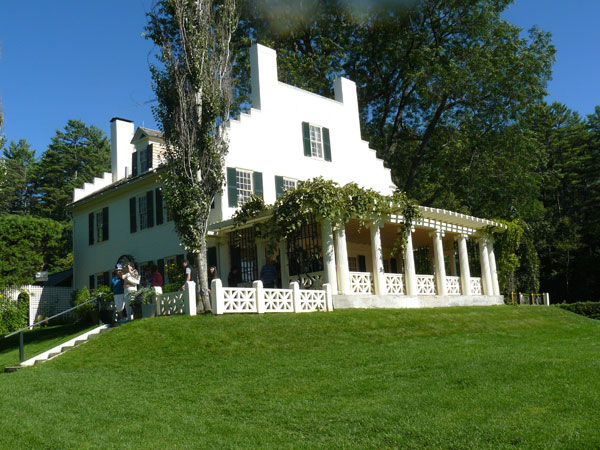
On a splendid summer day, in this strikingly beautiful part of the world, we reached back and experienced the delights of the Cornish artists’ colony and the brilliance of Augustus St. Gaudens, who fashioned the statue of Diana that graced the spire of Madison Square Garden, the Victory dollar, Chicago’s Standing Lincoln, and the relief that honors Massachusetts’ first colored regiment, the 54th, led by Robert Gould Shaw, who fought so bravely in the Siege of Savannah.

The payoff pitch, at the St. Gaudens Estate, is the artist’s studio. Immediately upon walking into the building, I got that tingle up the spine that says you’re meeting someone from another era and truly entering their world. The staff of the historic site deserve a lot of credit here, because they have arranged things so you can really see how St. Gaudens worked.
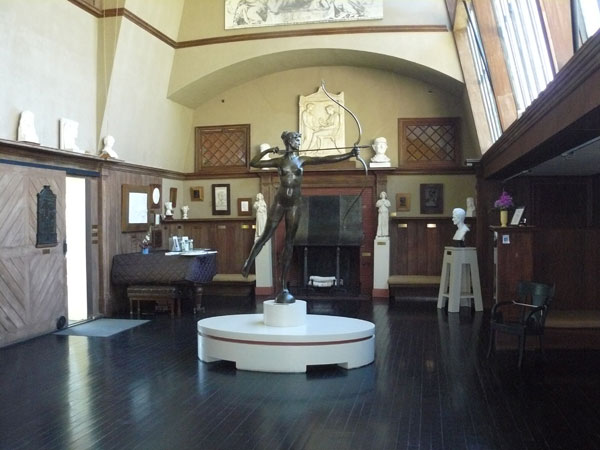

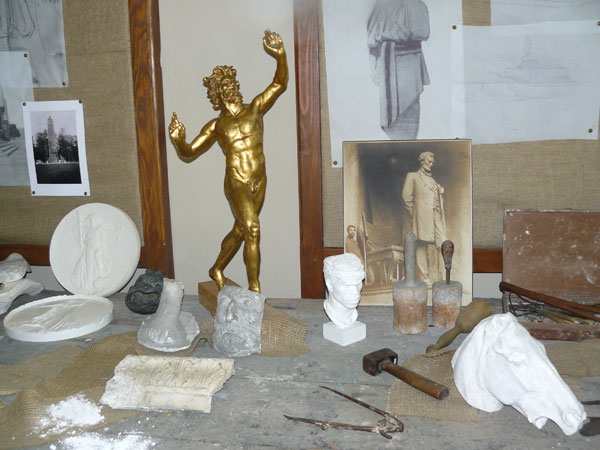
There’s a replica of Diana, whose body is a model but whose face is his girlfriend. There’s a bust of John Hay, who looks exactly like his great-great grandson, Bob Hay, another old friend of mine, and lot of other stuff that went into the finished pieces.
From Cornish, we drove to White River Juction, Vermont, where we stayed at the Hotel Coolidge, a classic hotel from the railroad era. If you don’t like the uniformity of chain hotels, you’ll love the Hotel Coolidge. It’s unlike any place you’ve stayed before.
I was drawn there by the murals painted by Peter Michael Gish in exchange for room and board when he was a student at Dartmouth College in 1950. These are works of extraordinary power by a very young artist earning his keep, but I believe they are masterpieces all the same.
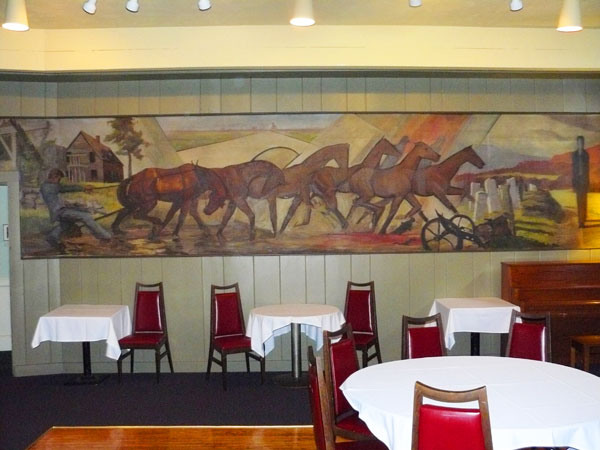
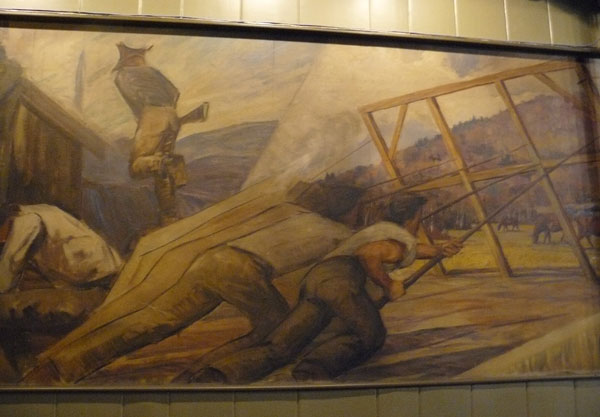
There’s a mural on three sides of the dining room illustrating the history of Vermont, and in the cafe, there’s a brilliant panel showing a barn dance, with the barn doors open to a view of the mountains, as if to say, “Here are the dancers, and here is the source of their strength.”
Gish and his girlfriend were the models for the central figures, and the other people are hotel employees — the fiddler, the bass player and the girl with the ubuttoned blouse. I studied these figures in detail back when the cafe was the hotel bar and I was a young reporter at the (Lebanon) Valley News.
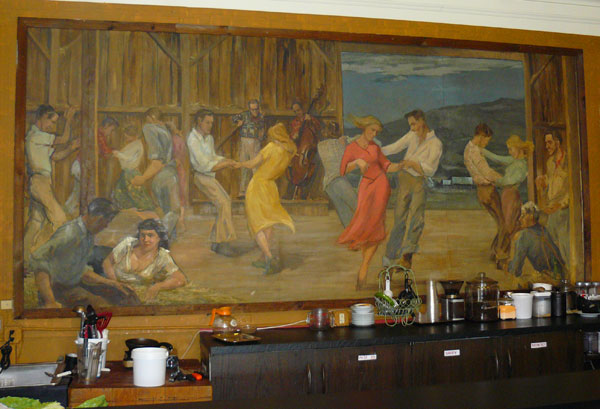
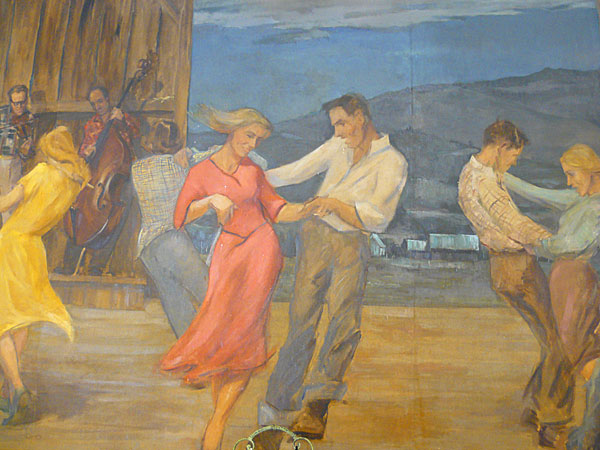
In the morning we set off for Quechee Gorge, where you will find a vintage diner and a sprawling antigue market that took up the better part of the morning. I found a nnew book on Aaron Burr, an historical friend of mine, and a volume of Maxfield Parrish’s photographs, which he used to make his paintings.
From there we drove through the lovely town of Woodstock and visited the birthplace of Calvin Coolidge in Plymouth Notch. This is another great journey into the history of America, to see the very houses where coolidge was born and brought up.
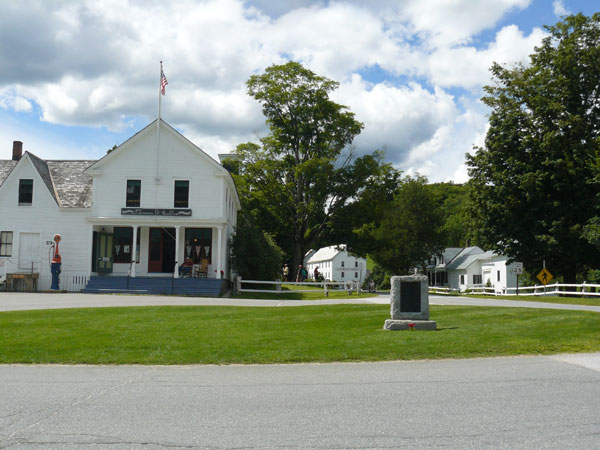
Coolidge, America’s most honest president since Washinton, took office on the death of Warren Harding, who stands alone as the most corrupt president in history, which is saying something. Mr. and Mrs Coolidge lived at a hotel for weeks and weeks while Harding’s widow, “The Duchess” and his aides burned all of Harding’s papers.
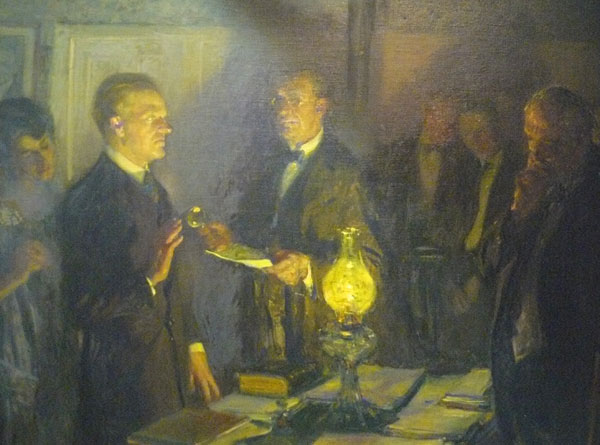

It’s no wonder Coolidge kept his mouth shut. He didn’t want to say anything about the world of filth he had stepped into.
But a visit to Plymouth Notch will show you what this reluctant statesman was all about. It’s all here. The dairy, the workshop, the cheese factory his father started, the carriages, the village church, all set against the magnificent backdrop of the Green Mountains. I guess, for me, it’s an affirmation of the true strength of America — honesty, hard work and perseverance in the face of adversity.
I think that if you want to know what is truly great about America, you should visit the Coolidge Birthplace. “If the spirit of liberty should vanish in other parts of the Union, and support of our institutions should languish,” Coolidge once said, “it could all be replenished from the generous store held by the people of this brave little state of Vermont.”
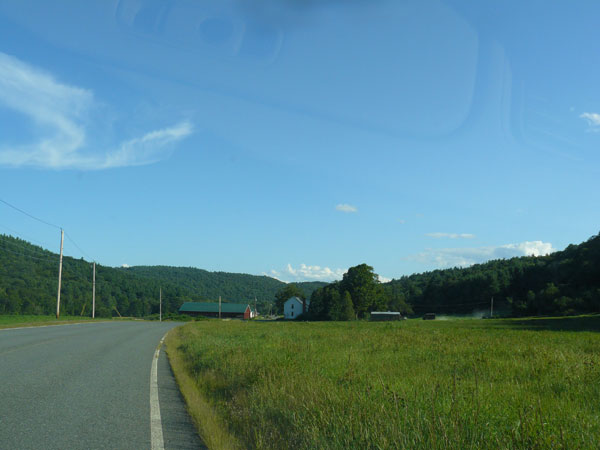
From Plymouth we set off down Route 100, right down the middle of Vermont. The pastoral scenery was gorgeous and the fields and hills were lush and verdant. We ended up our splendid road trip at the beautiful Bridge of Flowers in Shelburne Falls, Massachusetts.
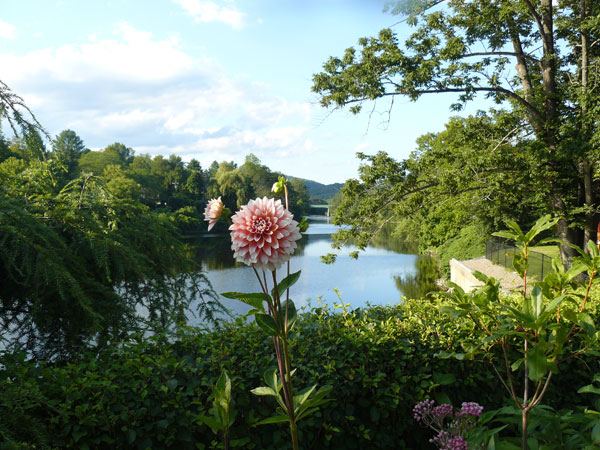
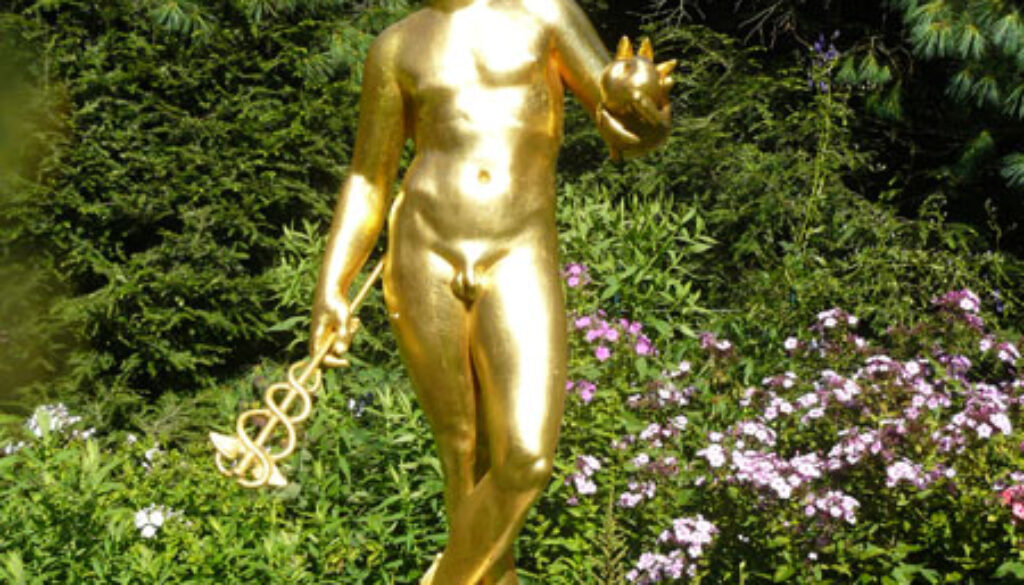
August 14, 2013 @ 8:57 pm
Most enjoyable travelogue Stephen. I like the murals a lot. Reminds me of the WPA murals we have in our local post office. (Wolfeboro, NH). Also, have not been to St. Gaudens, though wife Mary has. Your pictures make me think of the studio of Daniel Chester French (Lincoln Memorial) in Stockbridge (actually Interlaken). Same kind of treatment. You feel like the artist just stepped out for lunch.
August 20, 2013 @ 10:59 am
Nice one. Love the photos of the murals and the close ups! This could and should be a GoNOMAD Vermont Road Trip story!!
August 20, 2013 @ 10:13 pm
I was thinking the same thing myself.
February 11, 2014 @ 12:10 pm
Dear Stephen,
Thanks for putting our trip into words and photos. We must do another trip this summer. And yes, the laughs were from the belly. All was enjoyed and healing.
Eduardo
December 8, 2021 @ 6:23 pm
I came across this page because a little scrap of paper fell out of an old college-era book this afternoon with “Uncle Veeny’s Farm” at the top with directions on how to get there from Amherst MA. My recollection is a bit hazy but I think I met Ray Mungo there when we visited in early 1972.
December 9, 2021 @ 1:41 pm
Was this in Lyman, NH?